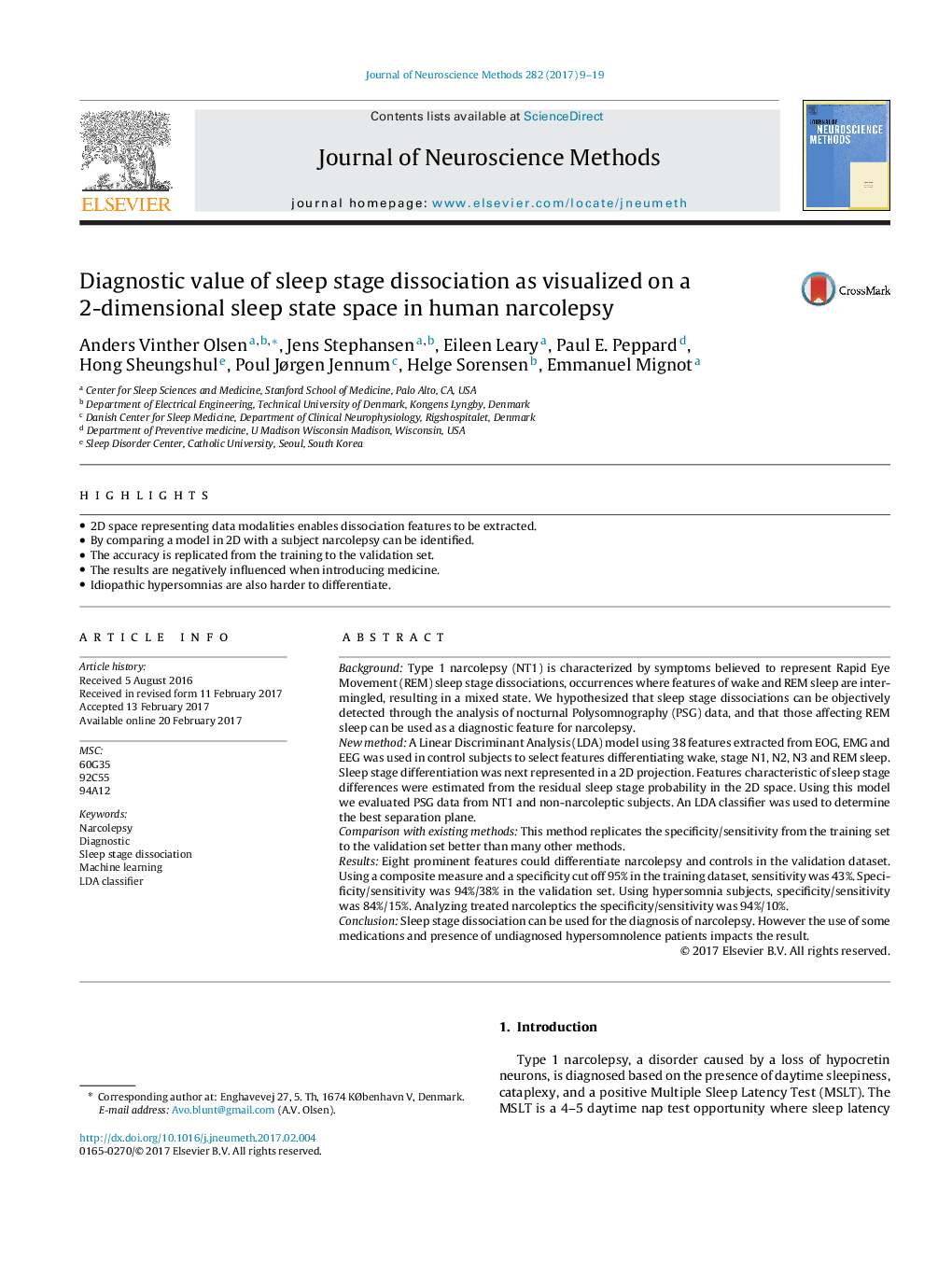| کد مقاله | کد نشریه | سال انتشار | مقاله انگلیسی | نسخه تمام متن |
|---|---|---|---|---|
| 5737290 | 1614587 | 2017 | 11 صفحه PDF | دانلود رایگان |
- 2D space representing data modalities enables dissociation features to be extracted.
- By comparing a model in 2D with a subject narcolepsy can be identified.
- The accuracy is replicated from the training to the validation set.
- The results are negatively influenced when introducing medicine.
- Idiopathic hypersomnias are also harder to differentiate.
BackgroundType 1 narcolepsy (NT1) is characterized by symptoms believed to represent Rapid Eye Movement (REM) sleep stage dissociations, occurrences where features of wake and REM sleep are intermingled, resulting in a mixed state. We hypothesized that sleep stage dissociations can be objectively detected through the analysis of nocturnal Polysomnography (PSG) data, and that those affecting REM sleep can be used as a diagnostic feature for narcolepsy.New methodA Linear Discriminant Analysis (LDA) model using 38 features extracted from EOG, EMG and EEG was used in control subjects to select features differentiating wake, stage N1, N2, N3 and REM sleep. Sleep stage differentiation was next represented in a 2D projection. Features characteristic of sleep stage differences were estimated from the residual sleep stage probability in the 2D space. Using this model we evaluated PSG data from NT1 and non-narcoleptic subjects. An LDA classifier was used to determine the best separation plane.Comparison with existing methodsThis method replicates the specificity/sensitivity from the training set to the validation set better than many other methods.ResultsEight prominent features could differentiate narcolepsy and controls in the validation dataset. Using a composite measure and a specificity cut off 95% in the training dataset, sensitivity was 43%. Specificity/sensitivity was 94%/38% in the validation set. Using hypersomnia subjects, specificity/sensitivity was 84%/15%. Analyzing treated narcoleptics the specificity/sensitivity was 94%/10%.ConclusionSleep stage dissociation can be used for the diagnosis of narcolepsy. However the use of some medications and presence of undiagnosed hypersomnolence patients impacts the result.
Journal: Journal of Neuroscience Methods - Volume 282, 15 April 2017, Pages 9-19
